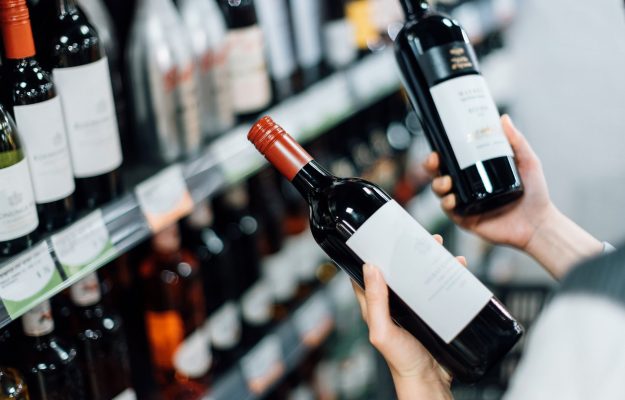That 2022 in Italian, European, and global large-scale retail has been a complex year of decline for wine, after the booms of the Covid era, and with the recovery away from home, has long been a fact. And if a general picture at the European level has been drawn in recent days by Iri research, a negative final balance for 2022, from the three foreign markets for Italian wine, such as the US, Uk and Germany, which are worth half of exports, comes black and white from data compiled by the Unione Italiana Vini (Uiv) - Vinitaly Wine Observatory on a Nielsen-IQ basis, which confirms what was recorded at mid-year, and also in view of the closing, with hopes still pinned on the end-of-year holiday season, which evidently did not affect more than a little.
In the three top buyers, 4.9 million hectoliters of Italian wine were sold in 2022, equivalent to a 9% drop on 2021, for values down 5%, to 4.7 billion euros. On 2021 sales, the equivalent of 63 million bottles and a counter value of 253 million euros are missing. Among the three markets, the worst overall performance is in the UK (-11% volume and -8% value), while the U.S. dampens the erosion in value (€2.1 billion) to -2%, limiting the volume minus to -5%. Germany’s -7% value flanks a 10% volume loss (1.7 million hectoliters). The glass is, however, half-full, the Observatory notes, if one considers that the downward dynamic on the large-scale retail channel is matched by the reopening of the out-of-home market, with the restaurant market given substantial growth. In short, a return to pre-Covid normality, economic crisis permitting. In all three markets, for different denominations, there is, in fact, a more or less soft return to 2019 levels, with Prosecco playing a separate game, with double-digit increases over the period.
“These contractions bring us back to the pre-Covid numbers of the retail sector; in a certain sense we are returning to a condition of normality”, stresses Unione Italiana Vini (UIV) president Lamberto Frescobaldi, “provided that demand for “out of home”, in restaurants and clubs, holds up in the face of a difficult economic situation. What is not normal, on the other hand, is the cost surplus, starting with energy and dry raw materials, that the sector is experiencing and that weighs even more in a context of reduced demand in such an important channel as large-scale distribution. This year it will be crucial to succeed in not depressing supply on the value front and, in addition to presiding over outlet markets, open up to emerging markets while counting on the support of institutions”.
“We are convinced, even more so in this particular historical moment, that the sector cannot afford to loosen its grip on its main outlet markets. This is why for 20 days now”, added Veronafiere CEO Maurizio Danese, “we have been engaged with Vinitaly in a road show to promote Italian wine and select the best buyers to invite to Verona; an unprecedented campaign in 9 countries on 3 Continents that includes a wide presence in the three main marketplaces but also on emerging targets. The action reflects a 30-40% increase in investments abroad that, thanks also to the support of Ice-Agenzia, will guarantee for Vinitaly 2023 a growth of top buyers in the order of 40%, to reach a doubling in 2024. After the recent US stops (Princeton, New York, Chicago), today Vinitaly will be in Munich, tomorrow in Brussels and then Zurich and, at the same time, in London and Cardiff, on February 8 and 9, to close the road show in Japan (February 21) and South Korea (February 23)”.
Looking at the appellations, according to the Observatory, in the last year, strong erosions in volumes sold in the U.S. for Chianti (-9%), Lambrusco (-13%), Montepulciano d’Abruzzo (-12%), and Piedmontese reds (excluding Barolo, -10%), while Prosecco continues in a positive wake, at +4% (+41% on 2019), and on the red side, Brunello di Montalcino grows by 5%. In Germany, a complicated situation for Primitivo (-8%) and double-digit volume contractions for Pinot Grigio and Nero d'Avola, as well as Lambrusco and Prosecco (-14.5%) even in its sparkling version (-26%). Prosecco down in the historic British marketplace as well (-15%), along with most still wines (-10%), with the exception of rosé wines, which increased sales by 40%.
Copyright © 2000/2025
Contatti: info@winenews.it
Seguici anche su Twitter: @WineNewsIt
Seguici anche su Facebook: @winenewsit
Questo articolo è tratto dall'archivio di WineNews - Tutti i diritti riservati - Copyright © 2000/2025








































































































































































































